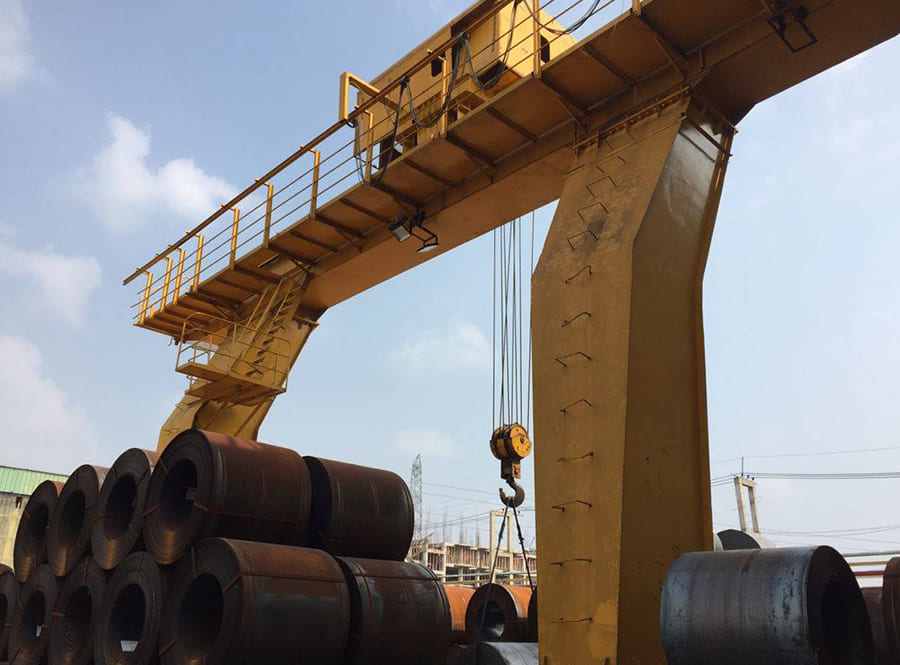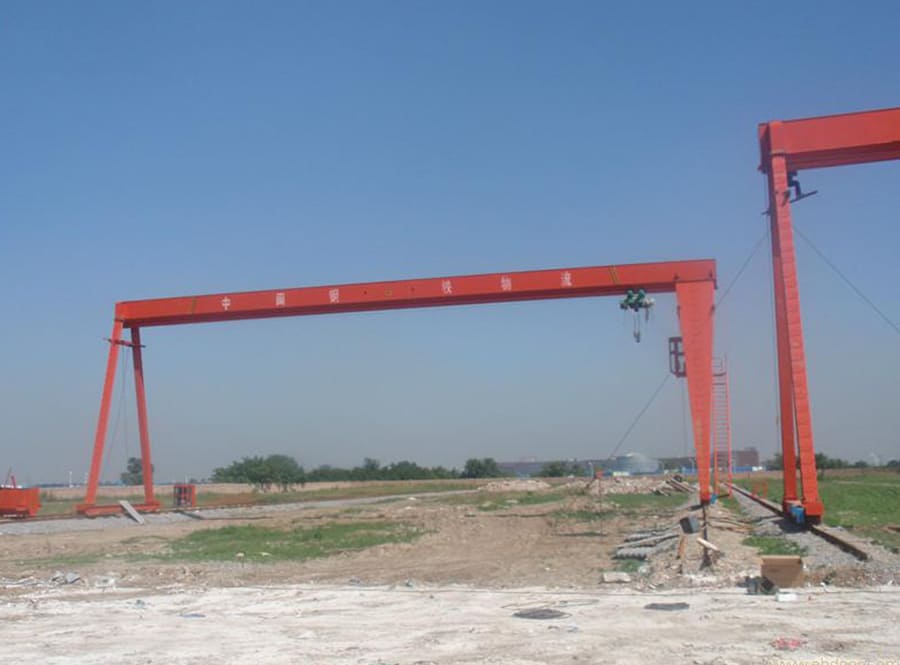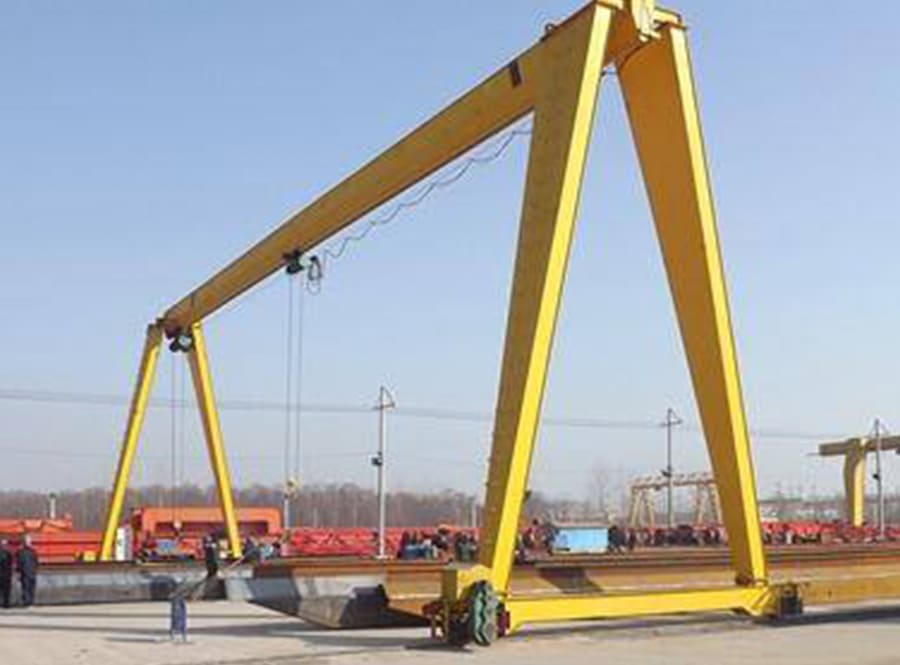Outdoor gantry crane are important equipment in the construction process of roads and bridges and are widely used in hoisting large heavy objects such as formwork and beams. During the hoisting process, the hoisting mechanism plays an important role. As an important component of the hoisting mechanism, the reducer achieves power transmission by reducing the speed and increasing the torque. During the operation of the crane, due to the complex and harsh working conditions and the complex load changes, the reducer is prone to failure such as bearing damage, gear failure, shaft deformation and fracture, etc., resulting in equipment shutdown or even serious accidents. In the investigation of outdoor gantry crane manufacturer safety accidents, it is necessary to sort out the various factors that caused the accident, and find the cause of the accident based on accident site investigation and physical evidence analysis.

Classification of lifting accident factors
Operator’s reasons: Lifting operators need to have professional knowledge and should not engage in unsafe behavior. However, in reality, crane operators are often unskilled, operate incorrectly, ignore safety, ignore warnings, work fatigue, etc. These factors may cause accidents.
Equipment Defects and Causes of Failure During actual use, cranes are prone to malfunctions such as wire rope damage, structural component wear, transmission system component damage, electrical component aging and functional failure, safety device malfunction and failure, etc. If these equipment cannot be discovered and dealt with in time Defects can lead to major accidents; long-term normal use of equipment is inseparable from good sevencrane outdoor gantry crane factory, and improper maintenance can also lead to equipment failure.

Design, manufacturing and product quality reasons GB/T 3811-2008 “Code for Crane Design” puts forward specific requirements for crane design. Improper design, unreasonable structure, etc. will directly affect the performance of the crane. A crane is an assembly composed of various parts, including various metal structural parts, mechanical transmission parts, electrical parts, safety protection and other accessories. GB/T 14406-2011 “General Gantry Crane” has these parts Corresponding test methods and inspection regulations, if the product is put into use without effective inspection and experiment, it will easily lead to equipment failure. There are many wireless remote control outdoor gantry crane company parts, and product quality defects will inevitably occur during manufacturing. The welded structure is prone to defects such as cracks, incomplete welding, slag inclusions, and pores; the cast structure is prone to defects such as shrinkage cavities, looseness, and inclusions; and the material properties of the parts may not be consistent. These defects and deficiencies will cause stress concentration and insufficient strength, which may lead to component damage during lifting. Exceeding the size and tolerance of components will affect the assembly quality and affect the normal use of the crane. The manufacturing quality of parts will directly affect their service life. Quality problems can cause premature failure and lead to unpredictable crane accidents.
Reasons for illegal use: Failure to comply with the requirements of GB/T 14406-2011 “Safe Use of Cranes”, illegal operations, skewed lifting, overload lifting, etc., resulting in structural damage to the crane, causing accidents; artificial removal of safety devices, causing the equipment to lose protection, causing ACCIDENT. According to relevant statistics, more than 50% of accidents are caused by illegal use.
5) Working environment reasons: Crane operation requires specific environmental conditions. The power supply, track tolerance, ground resistance, temperature, and climate conditions all have corresponding requirements. When the operating conditions exceed the range, it may cause crane failure. At the same time, there are usually conditions such as clutter and cross-working at the work site, which may also cause accidents. Operating under specific working environment conditions is a guarantee of the safety of the crane.
Reducer failure analysis
cause of issue
Common causes of reducer failures include: unreasonable design; unqualified processing and assembly; bearing failure, usually caused by quality defects, poor lubrication, foreign matter, and improper assembly; gear and shaft failures, usually related to quality defects and unreasonable design; lubrication System failure, etc.
The reducer damaged in the accident is a three-stage expansion helical gear reducer, which consists of a box base, a box cover, gears, shafts, bearings and related accessories. After the accident, the design of the reducer should be checked. The check results show that the reducer is reasonably designed and its strength and transmission capacity meet the requirements. The reducer is lubricated by an oil pool, and the bearings are splash lubricated. The oil is No. 220 gear oil. The user has regularly replaced the lubricating oil and recorded it. The quality of the residual lubricating oil on site has not deteriorated, which can rule out the failure of the lubrication system. Reducer failure. According to the maintenance records, the bearing parts of the reducer were replaced, and there were abnormal noises during the operation of the crane after the overhaul. Since the reducer was severely damaged, it was difficult to inspect the quality of its processing and assembly. Therefore, the possibility of failure of the reducer due to unqualified inspection and assembly cannot be ruled out.





















